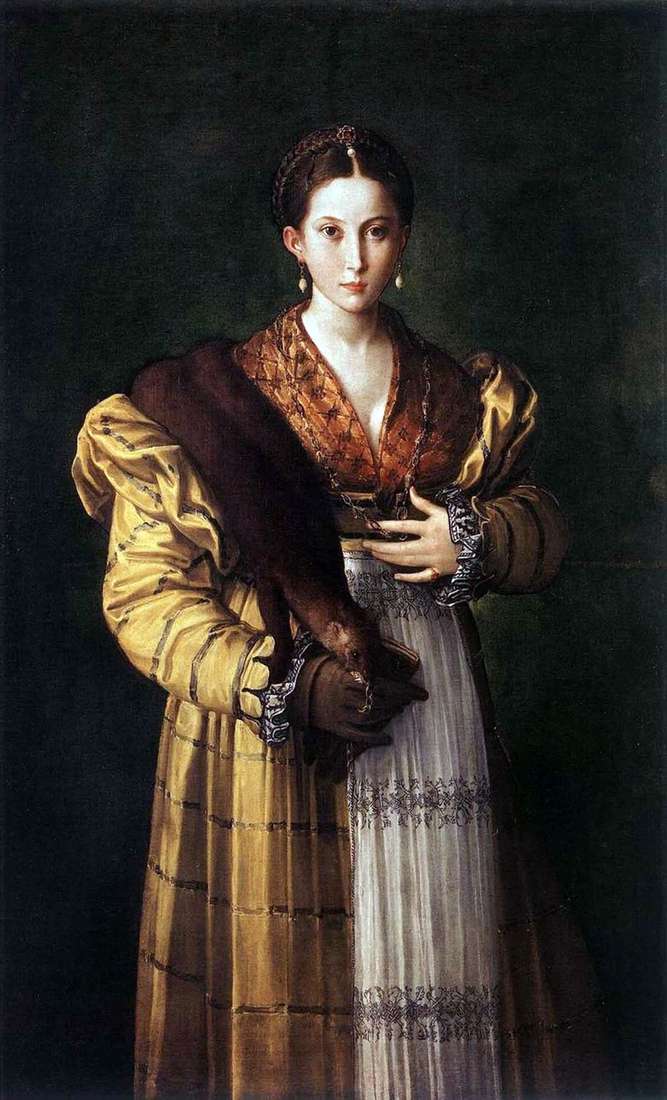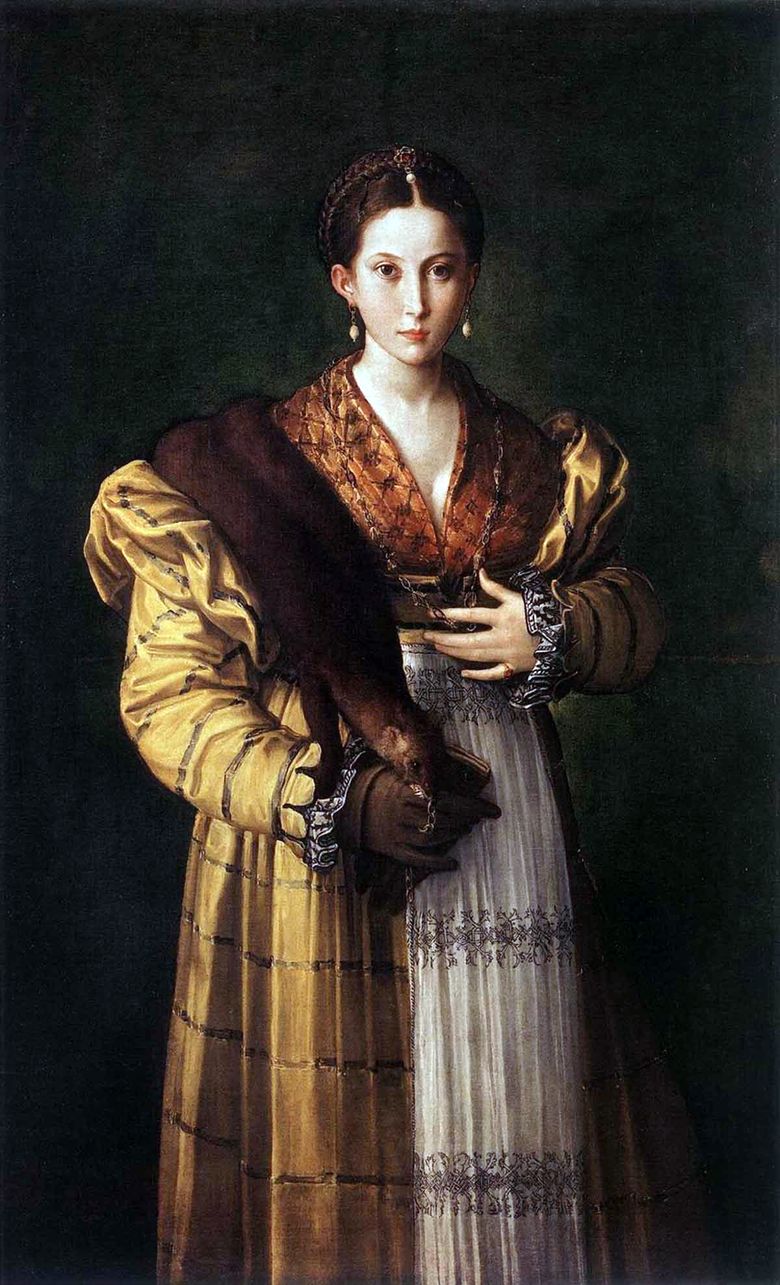
“Anthea” Parmigianino – a masterpiece of Italian Renaissance portraiture. Little is known about the picture: the creation date is not precisely set, it is not known why, and for whom it was written. It is also a mystery who exactly is depicted in the picture.
Anthea was written in the early 1530s by Girolamo Francesco Maria Mazzola, known as Parmigianino. Parmigianino portrayed standing Anthea with a surprisingly sincere gaze turned to the viewer. Her perfect oval of face contrasts with an incredibly luxurious body, hidden under the voluminous clothes that emphasize the shoulders and hips. The golden satin of the attire is decorated with silver braid, while the apron and cuffs of the lower dress are decorated with exquisite embroidery.
Most of the details of the costume of Anthea, including the marten fur, the gold chain, the hairstyle decoration, the embroidered braid, and the gold of the sleeves, were usually gifts presented by the beloveds. Often these gifts were given with the hope of having a love date and, dressing them, the woman signified her approval of the beloved’s courtship. Parmigianino portrayed Anthea showing her gifts: she holds a chain in her fingers and points her hand at her heart, thereby hinting that she accepts the offer of her lover. When she meets our gaze, her posture and gestures create the dynamics of passion between her and the viewer, who becomes her lover.
Until now, it is not known exactly what kind of woman she was portraying Parmigianino, her personality has been the subject of discussion for many centuries. The “Anthea” was first named in 1671 by the artist Giacomo Barry, who suggested that she was Parmigianino’s beloved. Anthea was the name of a famous Roman courtesan of the 16th century, Barry is referring to this woman. It was also believed that Anthea was either the daughter of a servant of Parmigianino, or a member of an aristocratic North Italian family, a bride of noble birth. But it is more likely that Anthea is a collective image of ideal female beauty in the genre of the Renaissance portrait, where the beauty of a woman and her virtue were the main subjects of the image, and her personality and exclusivity are secondary.
Creating a portrait of an incredibly beautiful woman who, in spite of this, seems real enough to get off the picture and talk to us, Parmigianino draws our attention to his unmatched ability to create the illusion of a transcendental world. “Anthea” encourages us to see the connection between passion and art in a new way; the picture simultaneously evokes sensual and sublime emotions. Despite the fact that women’s youth is ephemeral, in the Parmigianino film, beauty lasts forever.
 Anthea – Francesco Parmigianino
Anthea – Francesco Parmigianino Anthea – Francesco Parmigianino
Anthea – Francesco Parmigianino Turkish slave by Francesco Parmigianino
Turkish slave by Francesco Parmigianino Portrait of a man by Francesco Parmigianino
Portrait of a man by Francesco Parmigianino Vision of St. Jerome by Francesco Parmigianino
Vision of St. Jerome by Francesco Parmigianino Madonna with St. Margaret and other saints by Francesco Parmigianino
Madonna with St. Margaret and other saints by Francesco Parmigianino Viscountess Sansecondo with children by Francesco Parmigianino
Viscountess Sansecondo with children by Francesco Parmigianino Galeazzo Sanvital, Prince Fontanelato by Francesco Parmigianino
Galeazzo Sanvital, Prince Fontanelato by Francesco Parmigianino